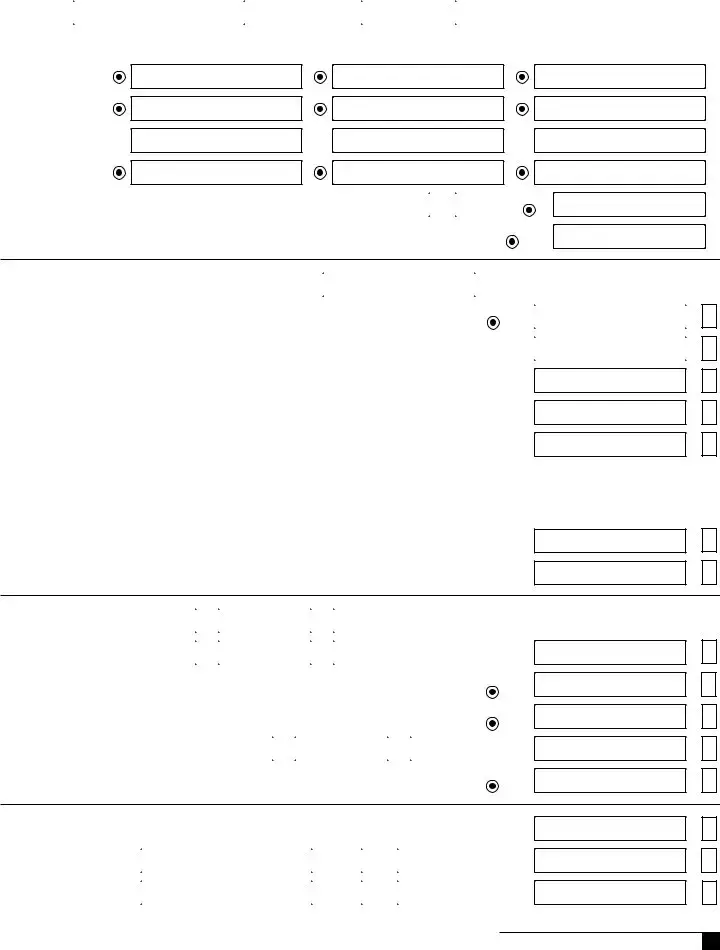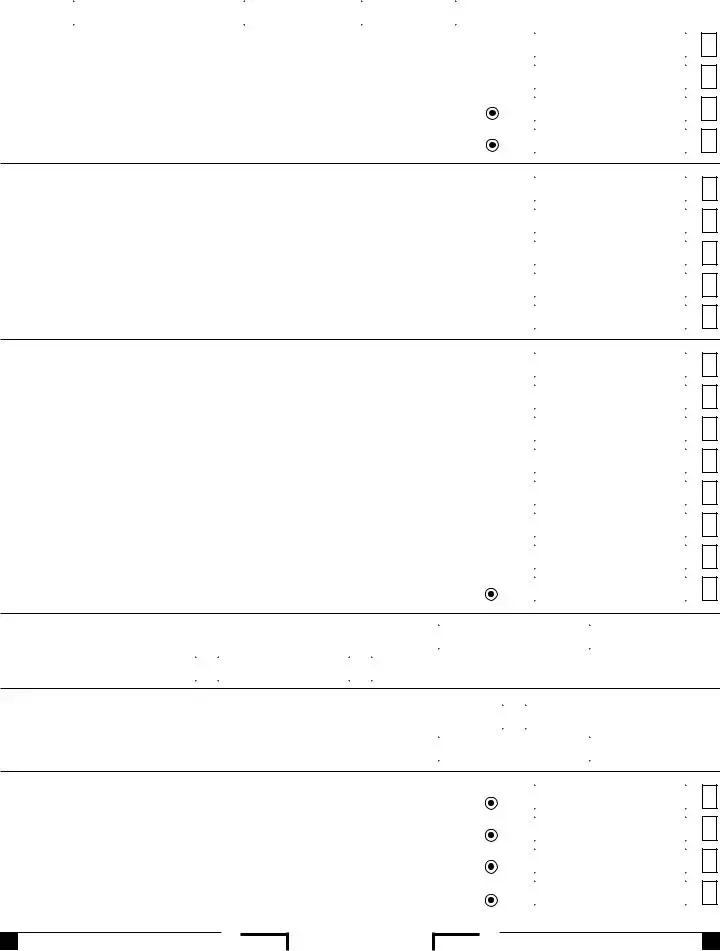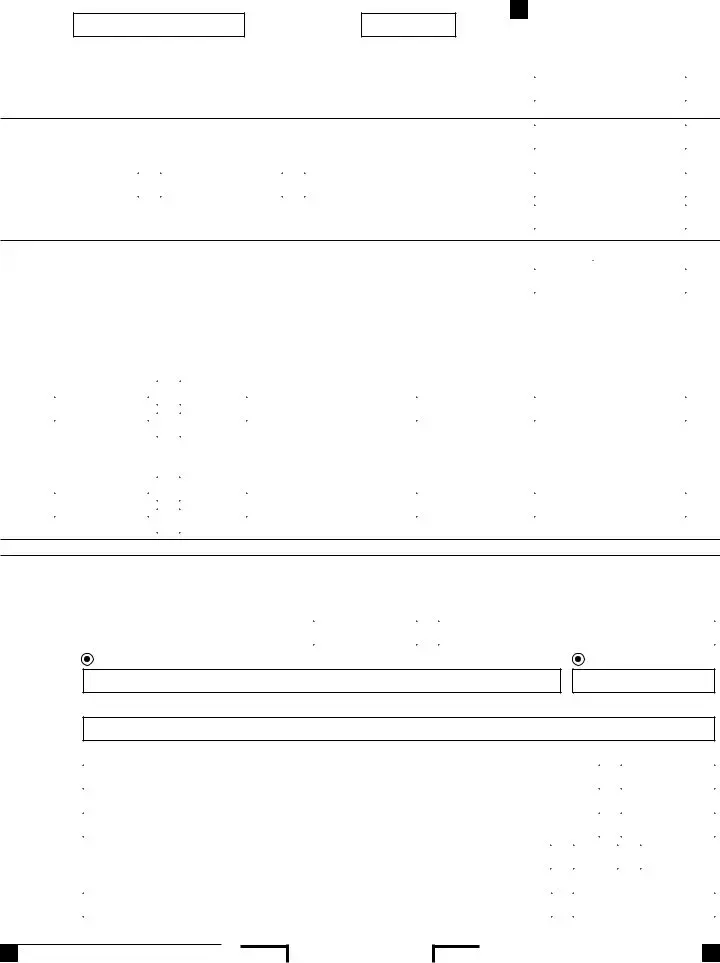The United States Federal 1040 Form is essentially the federal counterpart to California's Form 540. Both documents share the purpose of reporting personal income and calculating the taxes due to the government for the taxable year. They collect similar types of information, such as the taxpayer's income, deductions, and credits to accurately determine the amount owed or refunded. The key difference is their jurisdiction: one applies to federal taxes across all states, while the other specifically addresses state taxes in California.
Schedule CA (540) is designed to accompany the main Form 540, operating as the California adjustments document. It mirrors the federal Schedule A and allows taxpayers to adjust their gross income and deductions based on specifics that only apply within California. For example, while Schedule A might deal with federal-level deductions, Schedule CA (540) modulates this information to accurately reflect tax obligations according to California state law, highlighting disparities or specific allowances exclusive to the state.
The New York State Resident Income Tax Return (IT-201) serves a similar purpose to Form 540, but for residents of New York State. Like Form 540, IT-201 is used to calculate state income tax for individuals living within its jurisdiction. Both forms require detailed personal income information and account for state-specific deductions and credits. The form's design and function cater to the unique tax laws and provisions of New York, paralleling how Form 540 is tailored to California's tax codes.
Form W-2, the Wage and Tax Statement, is a document that directly integrates with the process of filling out Form 540 though it serves a distinct purpose. Employers issue W-2 forms to employees detailing the salary paid and taxes withheld during the year. Recipients of Form W-2 use it to complete portions of Form 540, ensuring their reported income and tax withholdings are accurate. It's a crucial document that bridges the taxpayer's information with both federal and state tax filings.
Form 1099 is another document closely linked to Form 540, especially for those receiving income outside of traditional employment. There are various types of 1099 forms, each pertaining to different income sources such as freelance work, interest, dividends, or government payments. Similar to how W-2 forms are used, information from 1099s must be reported on Form 540 for income not subject to regular wage withholding, affecting the calculation of taxable income and taxes owed.
Schedule D (540) specifically relates to California residents who need to report capital gains or losses. This form parallels the federal Schedule D, which calculates taxable capital gains. On both forms, taxpayers list details of asset transactions, such as stocks or real estate, to determine the net gain or loss. The calculated figures from Schedule D (540) are vital for completing Form 540, influencing the overall tax liability in a manner tailored to California’s tax regulations.
The Earned Income Tax Credit (EITC) Schedule for California mirrors the federal EITC requirements and aims to reduce the tax burden on low-to-moderate-income families. While the federal EITC supplements Form 1040, California’s version is directly related to Form 540, offering a refundable credit to qualifying residents. Both credits incentivize employment and support economic stability among working-class families, but the eligibility criteria and credit amounts may differ due to distinct state and federal guidelines.
The Alternative Minimum Tax (AMT) Schedule for Form 540 functions similarly to the federal AMT calculations, designed to ensure that individuals with higher incomes pay a minimum amount of tax. This form requires Californians to recalculate their tax under a separate set of rules to prevent taxpayers from excessively lowering their tax liability through deductions and credits. The concept ensures fairness in the tax system, paralleling the federal intent but tailored to California’s fiscal policies.
Child and Dependent Care Expenses Credit for California residents, as reported on a specific schedule with Form 540, shares its purpose with the federal child and dependent care credit. This tax credit assists families in offsetting some cost of childcare necessary for employment. While details and amounts may vary between California's provisions and federal regulations, both credits aim to support working parents, reducing their taxable income based on childcare expenses incurred.
Finally, the Young Child Tax Credit (YCTC) available in California is a unique offering that complements the family-oriented credits of Form 540, offering additional financial relief to families with young children. This state-specific credit underscores California’s progressive stance on supporting families through the tax system, similar in spirit to federal tax credits aimed at easing the financial burden on families but directly addressing the needs of California's residents.
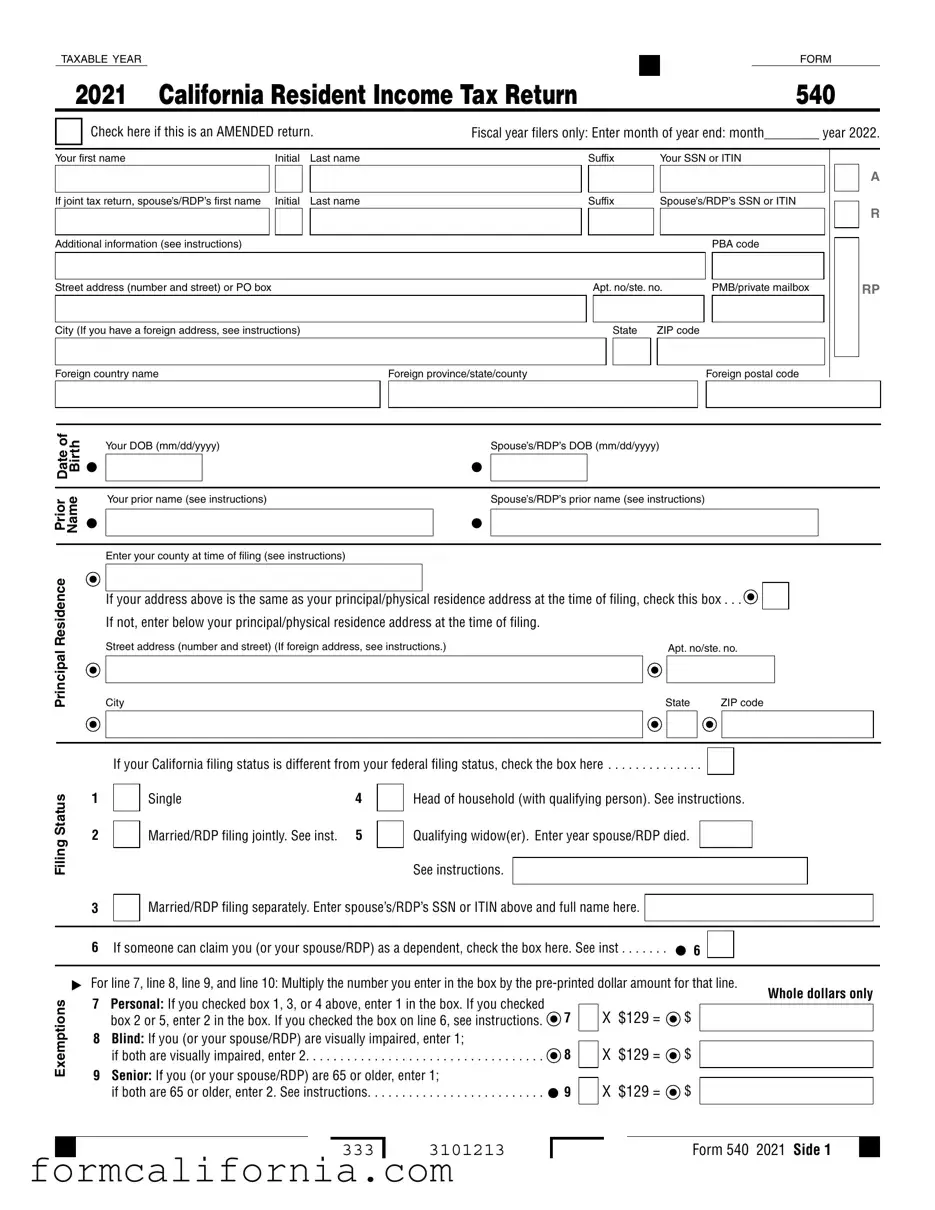
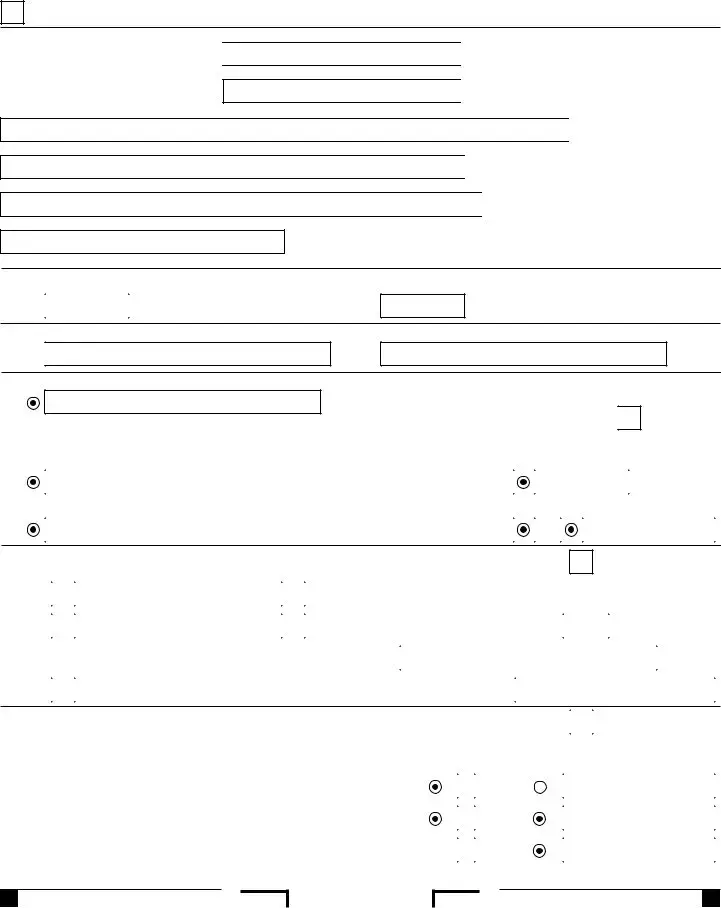

 If not, enter below your principal/physical residence address at the time of filing.
If not, enter below your principal/physical residence address at the time of filing.